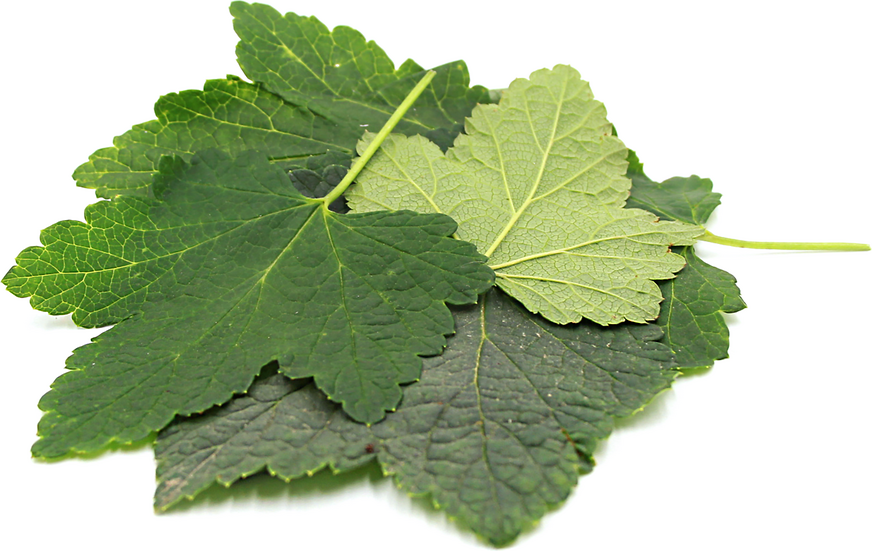


Currant Leaves
Estimated Inventory, ea : 0
Description/Taste
Currant leaves are palmate and deeply lobed, maple-like leaves. They grow on both black currant and red currant bushes. Each leaf is around 3 to 5 centimetres in length. The leaves of the black currant are a pale green in color, while the leaves of the red currant are a bluish-green. Both varieties are very fragrant, with black currant leaves smelling of currant cordial, while red currant leaves have a green, fresh scent. They have a currant flavor but can also be sharp and tangy.
Seasons/Availability
Currant leaves are available year round.
Current Facts
Currant leaves are botanically classified as Ribes rubrum and R. sativum. They grow on both red and black currant bushes. They can taste more 'currant-like' than the berries of the Currant plant, but it requires heat for the leaves to release their flavor. Thus, they are primarily used in herbal teas and drinks.
Nutritional Value
Currant leaves contain tannins and phenolic compounds such as anthocyanins, flavonols, flavan-3-ols and phenolic acids. The leaves have been shown to contain a significantly larger amount of phenols than in the fruit.
Applications
Currant leaves are commonly dried and used in teas. Young leaves are used in the Finnish summer drink known as 'Louhisaari’. Currant leaves are so tasty that when steeped in a warm liquid, they release a definitive currant-like flavor. This makes them good as a flavoring agent for jellies and ice creams. Curant leaves are also used in pickles. They contain tannins, which help keep the pickles crisp. To store Currant leaves, place them in a plastic bag in the refrigerator, where they will last for several days.
Ethnic/Cultural Info
Currants, prior to 1550, were known as 'ribes'. The word 'currant', which appeared as a reference for the fruit in 1550, used to be used for raisins. Currant leaves were used since ancient times to treat rheumatism and inflammation and there now is evidence to show that black currant leaves have properties that can help with influenza.
Geography/History
Currants have been cultivated in Europe since around the 1600s, with the use of black currant leaves in medicinals and teas dating back to 1636. By the 1800s, the currant could be found in gardens in England. Currant cultivation experienced a boom in the post-World War II years when they began to be grown in areas where it was difficult to grow citrus fruit.
Recipe Ideas
Recipes that include Currant Leaves. One




